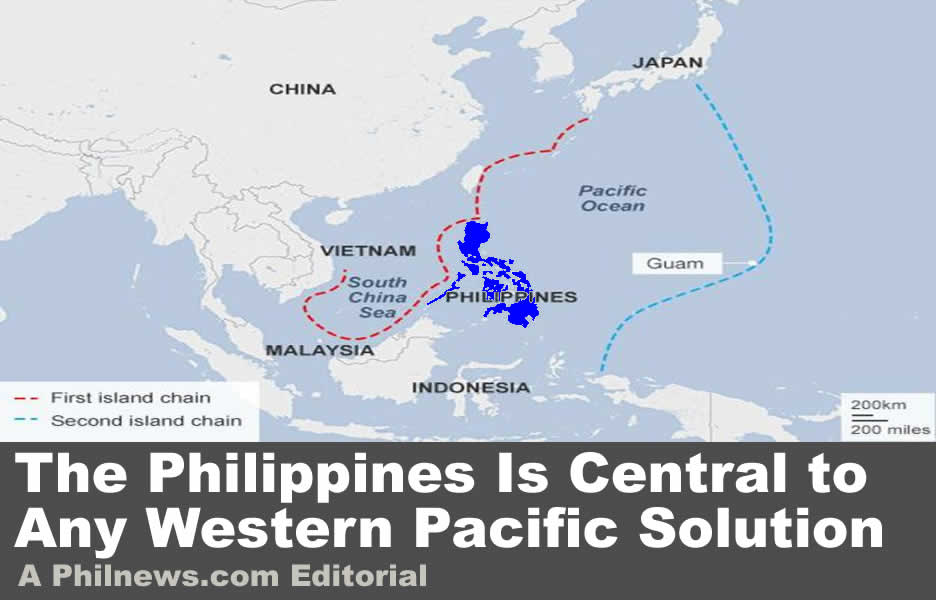 Map showing the first and second island chains. Photo: bbc.com
Map showing the first and second island chains. Photo: bbc.com

s we pointed out in a previous editorial, the Philippines' strategic location in the Western Pacific is highly desirable to both the United States and the Chinese navies. During the Korean War, American John Foster Dulles first broached what he called the island chain strategy. It was a means of containing the Soviet Union and China in the Western Pacific by deploying allied forces on islands along several delineated chains on a map.
Dulles' idea never really caught on with Americans the way it did with the Chinese. Communist China, fearing encirclement by the U.S. and its allies, still views that strategy with great seriousness. It has even mimicked Dulles' strategy by creating fortified islands in the South China Sea. Other nations, including the Philippines, claim some of those artificial islands China presently occupies.
The Philippines archipelago lies between the first and second island chains. Its strategic location is thus readily evident to both U.S. and Chinese naval planners. The movement of Chinese warships east of the first island chain can be severely impeded if the U.S. or its allies deploy sensing equipment in Philippine territory. Likewise, if China, instead of America, located similar equipment in the Philippines, U.S. warships will have difficulty moving undetected west of the second island chain (see map).
Because of its strategic location, the Philippines could hold the key as to which side eventually becomes the dominant naval power in the region. This explains why Chinese President Xi Jin Ping is so fixated in moving Filipinos towards China and away from the West. China appears to be flooding the country with its citizens in an attempt to gradually shift public opinion away from the U.S.
The latest polls, however, tell a different story. A recent Social Weather Station (SWS) poll conducted this September shows that Filipino's trust in Beijing continues to tumble and is now down to -33. The fact that China continues to occupy Philippine territory like Scarborough shoal, and the heavy-handed treatment of local fishermen by their Maritime Militia, explains why Filipinos generally despise them.
The U.S., on the other hand, continues to enjoy a +72 trust rating among Filipinos. However, if Americans want to maintain that rating, they need to do more for Filipinos. U.S. President Barack Obama hardly lifted a finger to help the Philippines during its Scarborough Shoal standoff with China. Sadly, American forces are also paying the price for Obama's inaction. Chinese fortifications on artificial islands in the Spratlys, built during the Obama presidency, now deny American warships access to waters that they once sailed through freely.
President Noynoy Aquino was too timid to demand more from America even though a long-standing mutual defense treaty between both countries existed. Obama could have easily sent part of his 7th Fleet to Scarborough Shoal to stand with the BRP Gregorio del Pilar, the lone Philippine frigate in the scene. The sight of U.S. warships might have sent the Chinese vessels scurrying all the way back to Shanghai.
That incident might be "water under the bridge" at this point. However, the fact remains that nature placed our archipelago in a very strategic location in the Western Pacific. Therefore, Filipinos must find their voice and negotiate with both America and China from a position of strength. Future generations of Filipinos will either benefit from or bear the brunt of what our generation does.
Which side Filipinos choose could likely determine which navy controls the Western Pacific. We must take this responsibility very seriously and demand that both America and China deal with the Philippines with equal seriousness. Published 12/08/2019
|